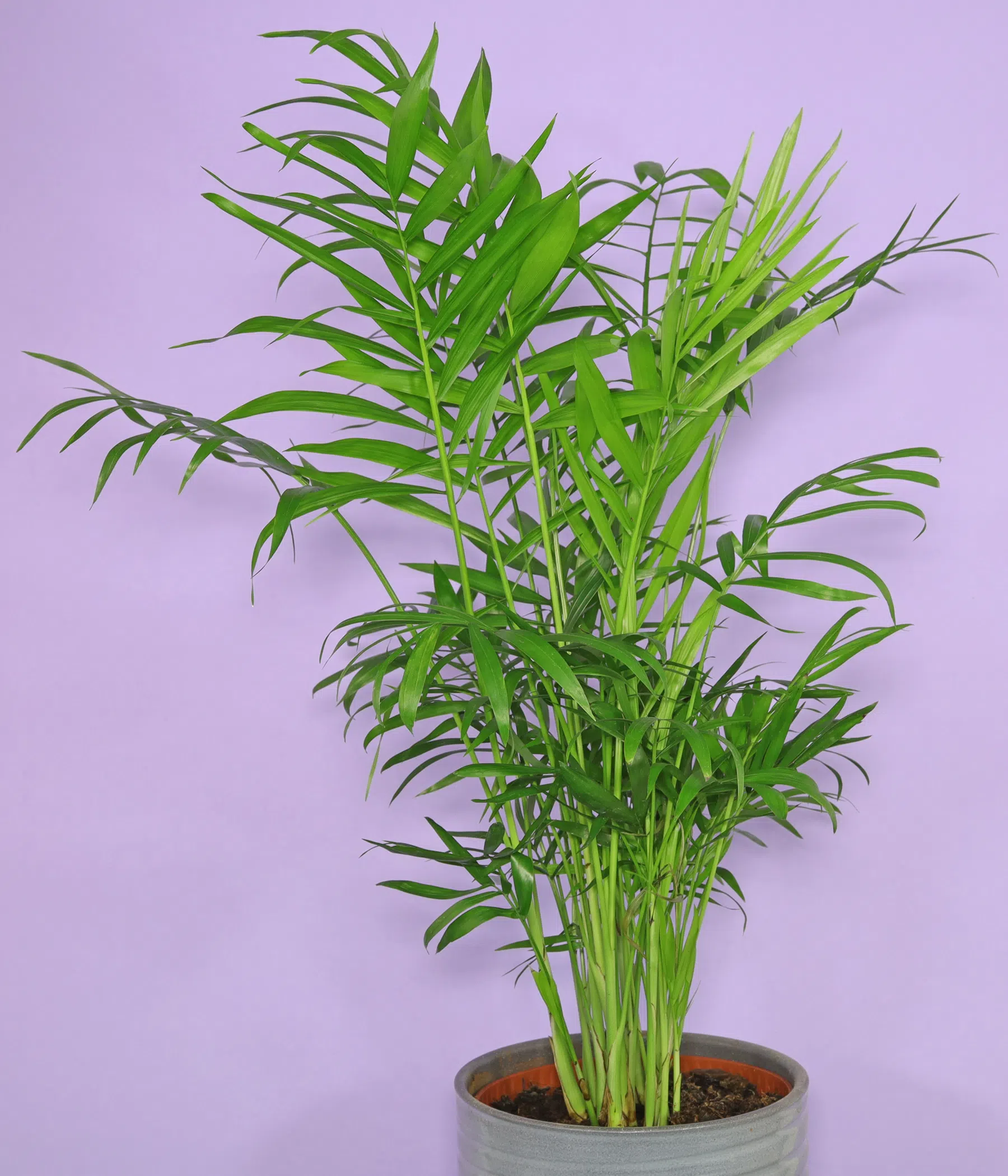Neanthe Bella Palm, Parlour Palm, Good Luck Palm
Description
The Neanthe Bella Palm (Chamaedorea elegans) can grow up to two meters high, but as it grows very slowly this takes many years. Its native habitat are forests in Central America, where it is native to Belize, Guatemala and Mexico.
It is offered as a group of seedlings or young palms. Of which not all individuals survive. This also happens with other plants that are sold this way, such as coffee.

Plant care
Lighting & Temperature
As a forest inhabitant, the Neanthe Bella Palm is adapted to low-light locations. Nevertheless, it does not want to stand in the shade or dark. Light to semi-shady locations are perfect.
Chamaedorea elegans tolerates little sun, so it should be protected from it. Otherwise its leaves will “burn”.
That it is placed too dark can also be seen on the leaves, they become smaller and smaller and the stems longer.
With room temperature all year round it copes well, the mountain palm can be overwintered at 59 °F (15 °C), but tolerates temperatures below 50 °F (10 °C) only for a short time.

Humidity
Regular spraying removes dust from the leaves, but increases humidity only for a few minutes.
An average humidity of 20 to 50% is tolerated well. During winter, Chamaedorea elegans should not be placed next to the heater.

Soil
Palm soil can be used, but substrates for houseplants, potted plants, herbs or vegetables are equally suitable.

Watering & Feeding
Most of the roots are in the lower part of the pot. Therefore, the rootball is allowed to dry up to about 80% of its height between waterings.
Drying out the soil for days at a time is not tolerated, as is wet soil.
Liquid fertilizer can be given monthly from spring to fall. Sticks, granules or other slow release fertilizers in spring and summer.
Since most substrates are pre-fertilized, there is no need to fertilize in the first year after purchase or repotting.

Propagation
The Neanthe Bella Palm can only be grown from seed.

